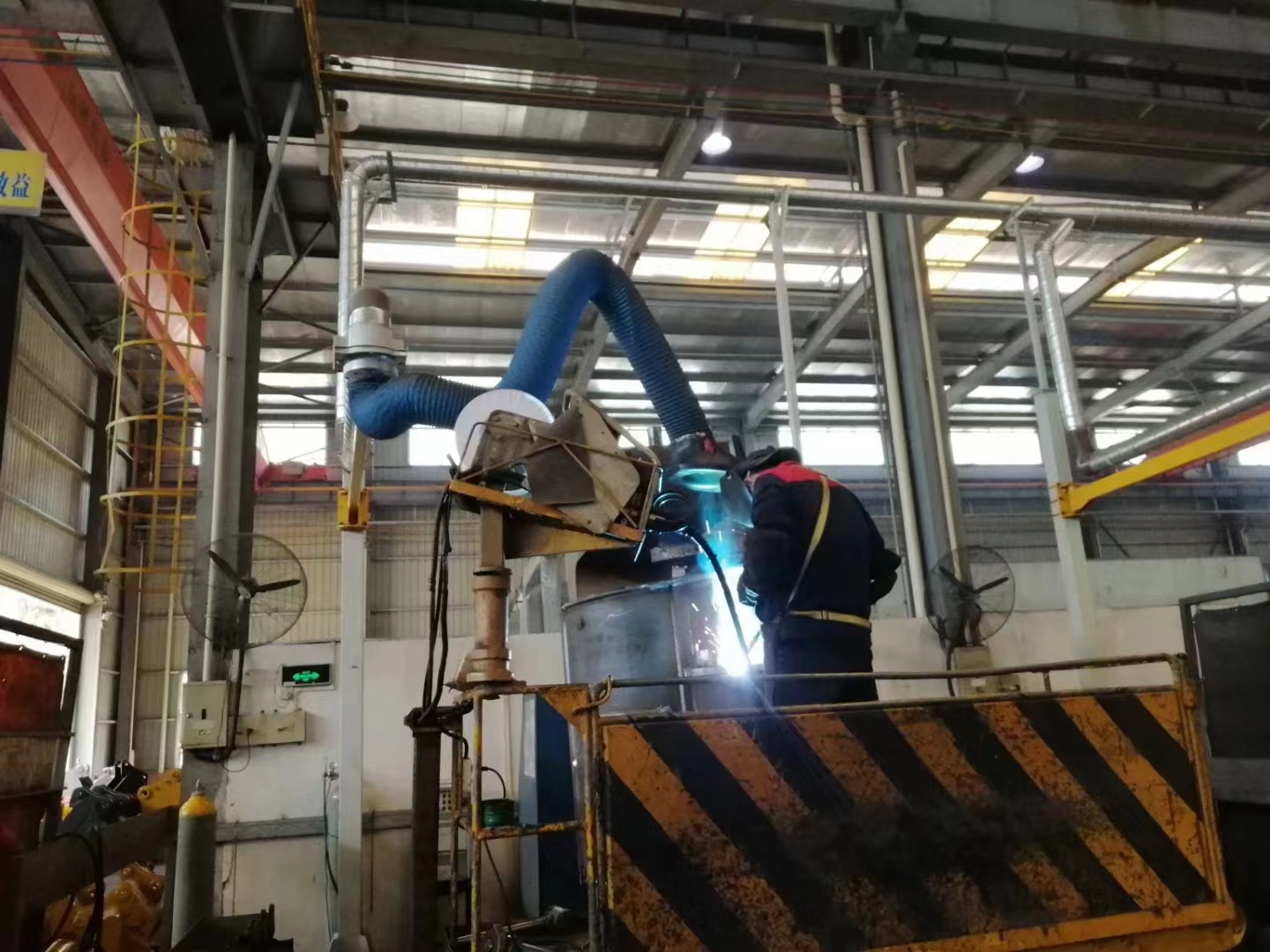- English
- Español
- Português
- русский
- Français
- 日本語
- Deutsch
- tiếng Việt
- Italiano
- Nederlands
- ภาษาไทย
- Polski
- 한국어
- Svenska
- magyar
- Malay
- বাংলা ভাষার
- Dansk
- Suomi
- हिन्दी
- Pilipino
- Türkçe
- Gaeilge
- العربية
- Indonesia
- Norsk
- تمل
- český
- ελληνικά
- український
- Javanese
- فارسی
- தமிழ்
- తెలుగు
- नेपाली
- Burmese
- български
- ລາວ
- Latine
- Қазақша
- Euskal
- Azərbaycan
- Slovenský jazyk
- Македонски
- Lietuvos
- Eesti Keel
- Română
- Slovenski
- मराठी
- Srpski језик
What are the selection criteria for the filter element material of welding filter cartridge dust collector?
2024-09-14
1. Filtration efficiency
- Dust particle size adaptability: The smoke particles generated during the welding process vary in size, and the filter element needs to be able to effectively filter dust of different particle sizes. For example, for tiny welding smoke particles, a material with high filtration accuracy should be selected, such as a coated filter material, the film on its surface can effectively intercept tiny particles, and the filtration efficiency is higher; if the welding smoke contains larger particles of dust, then the filter element material needs to have a sufficient pore structure to accommodate these large particles, while ensuring the filtration effect on small particles, such as a filter element made of a mixed material of glass fiber and polyester fiber.
- Air permeability and filter area: Good air permeability can ensure that the gas can flow smoothly through the filter element under a certain wind pressure, reduce air flow resistance, and improve the working efficiency of the dust collector. At the same time, a larger filter area can increase the contact area between the filter element and the dust-containing gas and improve the filtering effect. For example, the design of the pleated filter cartridge increases the filter area. When selecting the material, consider whether it is suitable for this structural design.
2. Temperature resistance
- Working temperature range: High temperature will be generated during welding operations, so the filter element material must be able to maintain stable performance under high temperature environment. Generally speaking, the working temperature of polyester fiber filter elements is around 135℃; glass fiber filter elements have better high temperature resistance and can work at higher temperatures, which is suitable for high temperature welding processes; and PTFE filter elements are not only resistant to high temperatures, but also have good chemical stability at high temperatures.
- Temperature change adaptability: During the welding process, the temperature may fluctuate greatly. The filter element material must be able to withstand such temperature changes without deformation, rupture, etc., to ensure the normal operation of the dust collector.
3. Wear resistance
- Dust wear resistance: Dust particles in welding smoke will wear the filter element under the drive of airflow, and long-term wear will reduce the service life of the filter element. Therefore, it is necessary to select materials with good wear resistance, such as high-strength polyester fiber, glass fiber, etc. The fiber structure of these materials is compact and strong, and can resist the wear of dust.
- Mechanical wear resistance: During the installation, replacement of filter elements and operation of dust collectors, the filter element may be subjected to mechanical collision, friction, etc., so the material must have a certain ability to resist mechanical wear to prevent the filter element from being damaged.
4. Corrosion resistance
- Chemical corrosion resistance: If some corrosive gases or substances such as acids and alkalis are generated during the welding process, the filter element material must have good corrosion resistance, otherwise it will be corroded and damaged. For example, PTFE material has extremely strong acid resistance, alkali resistance and corrosion resistance, and can maintain good filtering performance in such harsh environments.
- Hydrolysis resistance: In some environments with high humidity, the filter element material may come into contact with moisture and easily undergo hydrolysis, thereby affecting the performance of the filter element. Therefore, it is necessary to select materials with good hydrolysis resistance to ensure the service life of the filter element in a humid environment.
5. Cleaning performance
- Surface smoothness: The material with high smoothness on the filter element surface is not easy to adhere to dust, and it is easier to clean. For example, the surface of PTFE material is smooth and has a good cleaning effect, which can reduce the dust residue on the surface of the filter element, reduce the resistance of the filter element, and improve the operating efficiency of the dust collector.
- Electrostatic characteristics: Some filter element materials are prone to static electricity, which will cause dust to be adsorbed on the filter element, increasing the difficulty of cleaning. Therefore, it is necessary to select materials with anti-static properties, or to perform anti-static treatment on the filter element, such as adding anti-static agents, to ensure the cleaning effect.
6. Flame retardancy
- Fire safety: Sparks and other fire sources may be generated during welding. If the filter element material is not flame retardant, it is easy to cause safety accidents such as fire. Therefore, the filter element material must have good flame retardant properties and can be used safely near fire sources to ensure the safety of the production environment.
- Self-extinguishing: Even if the filter element comes into contact with a fire source, it should be self-extinguishing, that is, it should be able to extinguish itself after the fire source is evacuated to prevent the fire from spreading.





